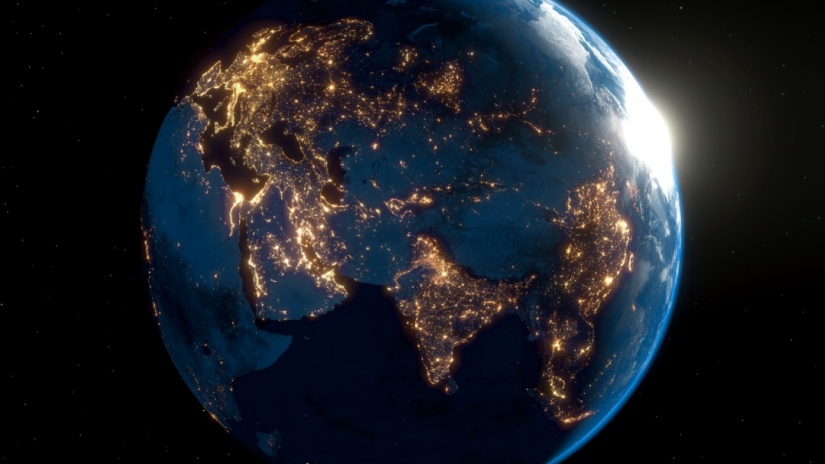Knowledge Centre
How electricity moves around Australia

When you flick on a light switch, it’s easy to forget the complex journey electricity has taken to reach your home. Behind that simple action lies one of the largest interconnected systems in the world - the Australian electricity grid.
This network keeps the power flowing across five states, but it’s also under pressure as the country shifts towards renewable energy. Understanding how the grid works, and why it’s so difficult to upgrade, helps make sense of many of the energy challenges Australia faces today.
What the NEM actually is
Most of Australia’s electricity is shared through something called the National Electricity Market, or NEM. Despite the name, the NEM is not a single power plant or one company. It is a system that links electricity generators, transmission lines, retailers and users across much of the eastern and southern parts of the country.
The NEM covers Queensland, New South Wales, the Australian Capital Territory, Victoria, South Australia and Tasmania. Western Australia and the Northern Territory run their own separate grids that are not connected to the NEM.
This network allows electricity to move between states, depending on where it’s being produced and where it’s needed. For example, if Queensland has more energy than it needs, some of that power can be sent down to New South Wales or Victoria. In this way, the NEM helps balance supply and demand over a wide area.
How electricity travels across the grid
Electricity doesn’t sit in a pipeline waiting to be used. It is generated the moment it is needed, and it flows instantly from power stations to homes and businesses through a series of transmission and distribution lines.
The high-voltage transmission system is used to carry electricity over long distances. Once it reaches cities or towns, transformers lower the voltage so that the electricity can travel through smaller distribution lines to individual homes and buildings.
To make this work across state lines, the NEM relies on special transmission links called interconnectors. These are the big cables that carry electricity between regions. Some are above ground, while others run underground or even under the sea, like the cable between Tasmania and Victoria.
Why state boundaries still matter
Even though the NEM is a shared market, each state still manages its own electricity system in many ways. Decisions about energy policy, planning and investment are often made at a state level. This means that rules, priorities and targets can vary depending on where you live.
For example, one state might push hard for more renewables, while another focuses on gas or new transmission lines. These differences can create delays or clashes when building new infrastructure that crosses borders.
States also have different needs. South Australia has a high level of wind power, which can be variable, while Queensland has a mix of coal, gas and solar. Tasmania relies heavily on hydroelectricity. These differences affect how each part of the grid operates and what kind of support it needs.
Why upgrades are so difficult
Upgrading the electricity grid is much harder than just installing new cables. Every new project must go through complex planning, environmental assessments, community consultation and regulatory approval. Many proposed upgrades involve long distances, cross private land, or require coordination between multiple states and agencies.
Transmission lines also cost a lot of money to build and maintain. The longer the line, the more it costs = and in many cases, the best locations for renewable energy are far away from the existing grid. This creates a challenge: new power sources are ready to go, but the grid isn’t always prepared to carry that energy to where it’s needed.
Another problem is timing. A new wind or solar farm might be built quickly, but the transmission line needed to support it could take several years. If the two don’t line up, clean energy can be wasted or held back.
The role of interconnectors
Interconnectors play a key role in helping the grid run smoothly. These transmission links allow power to flow between states, which improves reliability and helps share renewable energy. When one region has more supply than it needs, an interconnector can send that power to a region experiencing high demand.
This balancing act reduces the need for expensive backup power and lowers the risk of blackouts. It also allows the entire NEM to operate more efficiently. But as demand for renewables grows, existing interconnectors are reaching their limits.
Several new interconnectors are being planned or built to support the transition to cleaner energy. These projects aim to move more electricity between states, improve stability, and open up new areas for renewable development. However, just like other grid upgrades, they are complex and take time.
Why the grid is key to clean energy
Australia has no shortage of sunshine and wind. The country is building more solar and wind farms every year. But unless the grid is ready to move that energy, a lot of it will go to waste.
A modern electricity system must be fast, flexible and connected. That means having strong interconnectors, reliable transmission lines, and enough capacity to handle peaks in demand. It also means planning ahead, so the grid can keep up with the pace of renewable energy development.
The electricity grid is not just a set of wires - it’s the foundation of how Australia will power itself into the future. Every light switch, every factory and every air conditioner depends on a system that most people never see. Upgrading it may be complex and costly, but it is also essential.
To find out how changes in the electricity grid could affect your energy bills or plan options, speak to Compare Energy on 1300 790 106.

